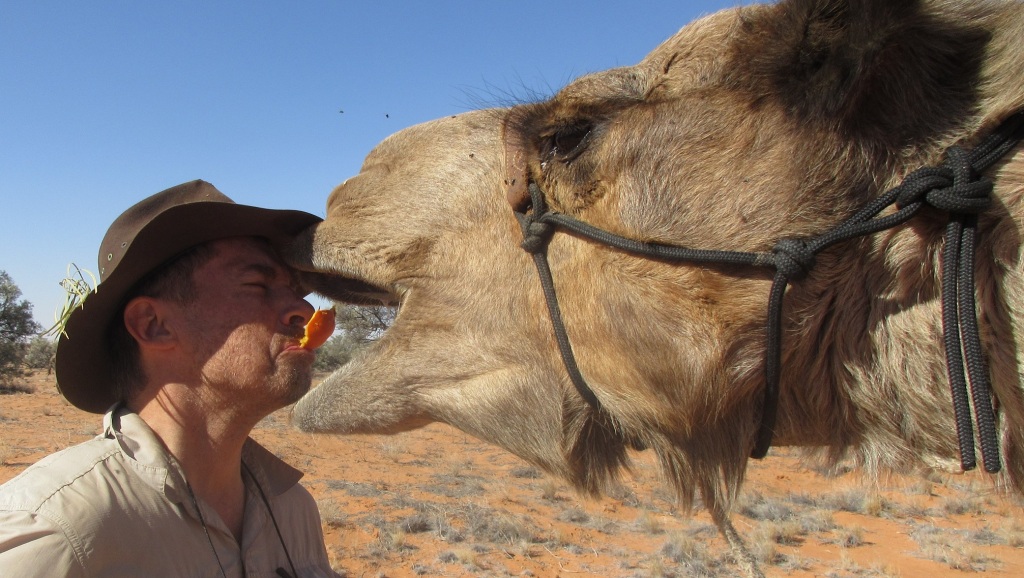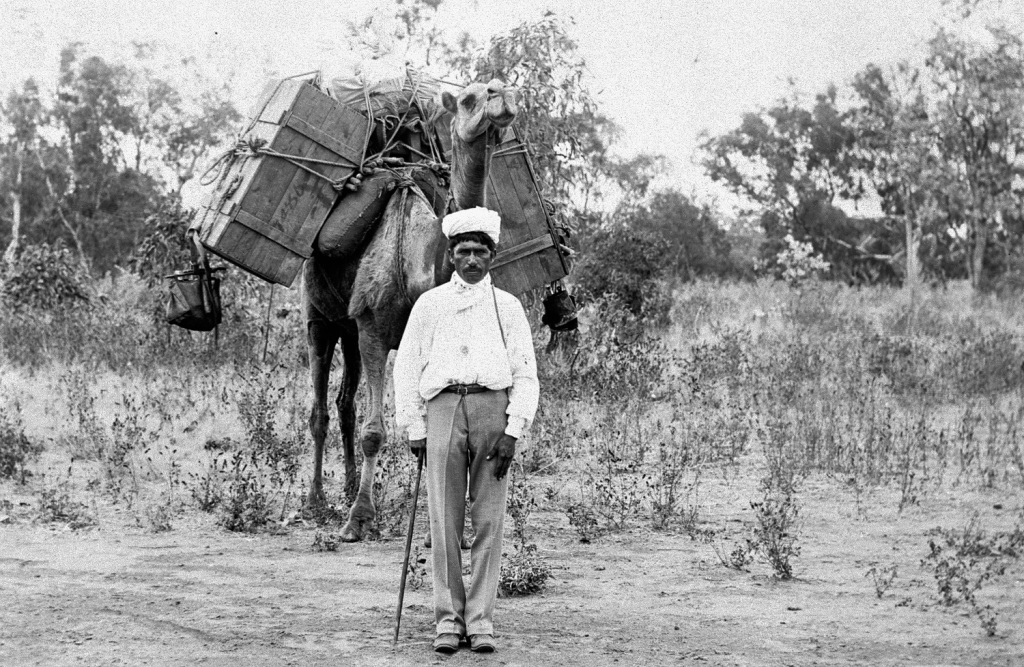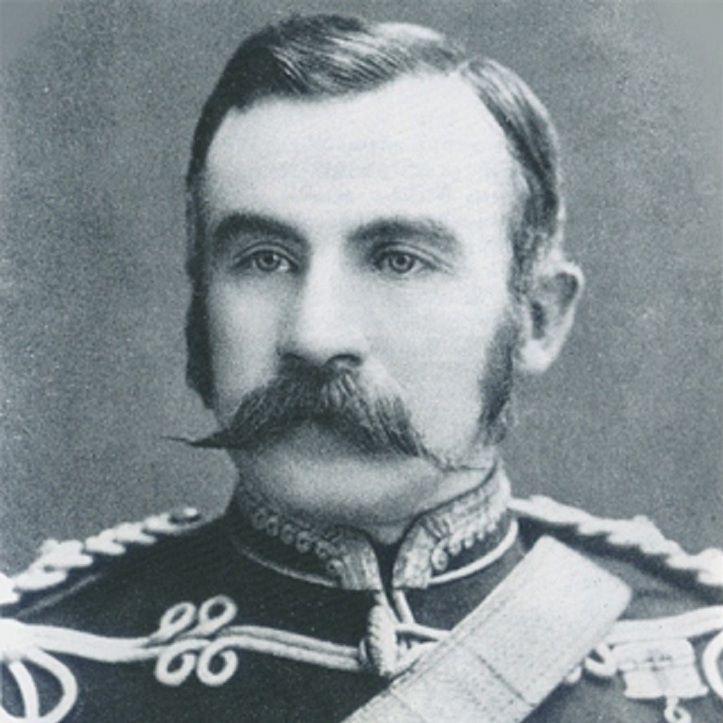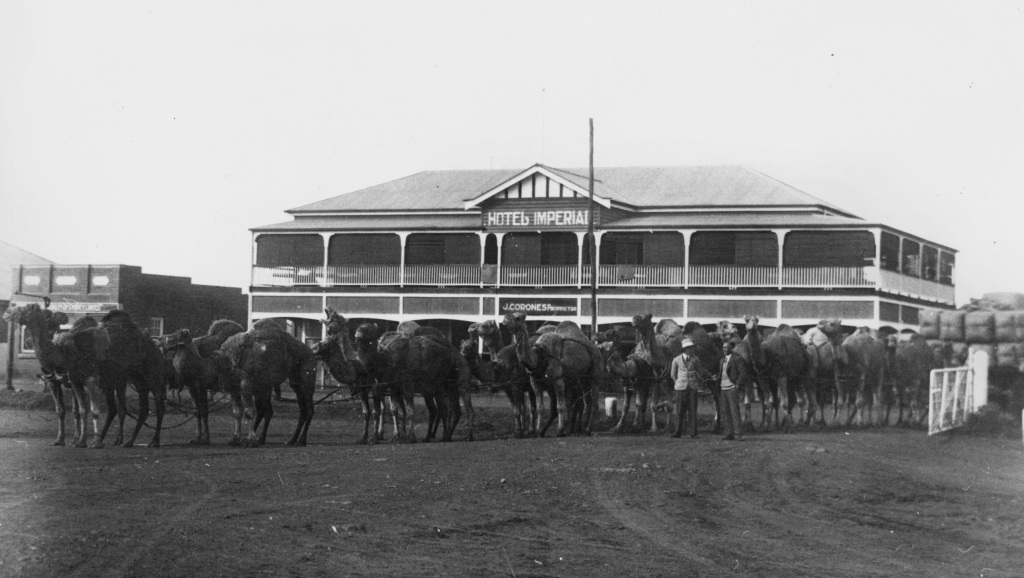
On the lonely dusty tracks of Australia’s remote country, boundary riders and others developed close relationships with camels. I told a version of this story from western Queensland on radio 4WK.
The contributions of camels to Australian history have been immense, from the early explorers to carrying supplies to remote communities, and simply keeping people alive.
Even now they’re still used in scientific research expeditions where nothing else can go, because I’ve trekked through the Simpson Desert on scientific & ecological surveys myself. Here are just a few tales about camels in south-west Queensland.
From the 1860s, around 20,000 camels and their handlers from Afghanistan, Pakistan and elsewhere were brought to Australia. Camels were ideal for carrying goods across long distances in Australia’s harsh environments.
One of the most famous cameleers was Gunny Khan. He came from Afghanistan and claimed to be one of the only three Afghans in Australia, saying the others were from hill tribes in India. He spoke fluent English and so was often used as an interpreter in the courts. This earned him the ill-will of some so-called Afghans, and there were a number of attempts made on his life. For others, he was the subject of the greatest respect, and was often asked to arbitrate on tribal disputes.

Gunny was the owner of a camel train and in 1890 he applied to join the Carriers’ Union. But he was rejected because he was Afghan, and then he might have said a few things that upset the union leadership. As a result, the unions boycotted his camels. Parliament was even petitioned to either have the camels destroyed or taken out of the country all together.
In 1891 Colonel George French, the commander of the Queensland Defence Force, was sent to protect Gunny and his camels. Colonel French took with him men from the field artillery and the volunteer rifles. They escorted a camel train from the New South Wales border with Queensland and north to Cunnamulla. It brought food that saved the lives of locals who were isolated due to flood. Nothing but camels could get through. The infantry then accompanied the camel drivers safely back south to the border. That’s how important the camels were.

In 1915 however, camels were still a novelty. A parade in Stanthorpe was a success in every way thanks in part to a fully-grown camel being included in the procession.
In 1925 it surprised many in Toowoomba to know that at Quilpie, which was at the end of the Great Western railway line, that camels were still being used to carry loads of general merchandise and fruit consigned from Toowoomba. Traders regularly arrived in Toowoomba to purchase fruit and other goods that were destined to be carried by camels to parts that had not yet been reached by horse and dray or truck.

Those same Quilpie traders relied on camels for survival even more the following year in 1926 when virtually the whole of Quilpie was burnt down and had to be rebuilt from scratch.
In 1947 it was reported from Goondiwindi that camels were used to take a critically injured man across one hundred and forty kilometres of rain sodden country to Cunnamulla hospital. The man was Colin Harvey, a boundary rider at Thurulgoona Station which was almost on the border fence. He badly broke his leg when his horse fell on him.
There was no way of getting Harvey to hospital because of the water-logged roads. Horses and motor vehicles were out of the question, and Harvey’s life was in the balance. The station’s camel team was called upon and it came to the rescue.
After his remarkable rescue that made headlines around Australia, Harvey then disappeared from history. But that wasn’t unusual for boundary riders with their remote and somewhat recluse lifestyle. You see it wasn’t long after that a boundary rider was found mysteriously murdered. Police cleared up that mystery when they said he died from poisoning, and not from the bullet wound in the head, as was at first thought.
The Western Downs and beyond was a tough country for boundary riders and everyone who tried to make a living there, but the camels always managed to get through and helped build the lifestyle that we enjoy today.
CLICK HERE TO LISTEN TO A VERSION OF THIS STORY TOLD ON RADIO 4WK.
Photo credits:
Feeding Sultan in the Simpson Desert, 2019 – Harold Peacock.
Afghan camel driver and a camel heavily laden with boxes c1890 – State Library of Queensland.
George French – Australian Boer War Memorial.
Camel train outside the Imperial Hotel, Quilpie c1927 – State Library of Queensland.
